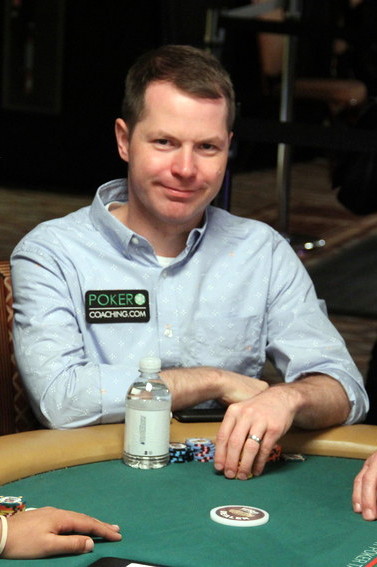[ad_1]
 If you want to increase your poker skills and learn to crush the games, check out Jonathan Little’s elite training site at PokerCoaching.com/CardPlayer.
If you want to increase your poker skills and learn to crush the games, check out Jonathan Little’s elite training site at PokerCoaching.com/CardPlayer.
I’d like to address a mistake that I witness numerous amateurs make on a regular basis.
Most of these players are completely oblivious to their blunders. This mistake is difficult for amateurs to notice, especially those who play in the small- or middle-stakes games, because the vast majority of the player pool exhibits this same flaw. Once they become enlightened to this error, they instantly become able to improve their strategies and mindset, allowing them to focus on other strategic elements of poker.
The mistake is that most amateurs only three-bet (reraise) before the flop with their premium hands.
Most amateurs simply do not apply enough pressure before the flop. Their strategy is to wait for strong hands and then three-bet with them, hoping their opponents blindly pay them off with all sorts of junk. What instead happens is their opponents easily fold to the aggression, making it nearly impossible for the amateur to extract value.
Instead of three-betting with only premium hands, you should three-bet with a wider range that is based on how you expect your opponent to react.
For example, if you expect your opponent to call your three-bet with a wide range of marginal hands such as 2-2, A-10, and K-9, then you should three-bet with what is referred to as a linear range. This range consists of your best hands, such as A-A and A-K, as well as hands that should have your opponent dominated, such as 9-9, A-J, and K-Q.
You will find this strategy works best against loose players who are not capable of folding to a three-bet before the flop once they have any amount of money invested. Going to the flop against a dominated opponent will work amazingly well for you because you will have a significant range advantage.
Here is an example of a linear range:

This range should be widened or tightened based on how you expect your opponent to proceed.
If you expect your opponent to either fold or four-bet (re-reraise) when you three-bet, you should instead three-bet with what is referred to as a polarized range. This range consists of your best hands that can withstand any amount of pressure, such as A-A and A-K, and hands that are not quite good enough to call your opponent’s initial raise, potentially including hands like A 9
9 , K
, K 10
10 , K
, K 9
9 , and 10
, and 10 7
7 .
.
Notice that when implementing this strategy, you will be calling with your hands that flop decently well, such as A-J, K-Q, and 8 7
7 . This strategy works because when you three-bet with a weak hand, you rarely expect to see a flop, and when you do, the bottom portion of your three-betting range will flop well enough.
. This strategy works because when you three-bet with a weak hand, you rarely expect to see a flop, and when you do, the bottom portion of your three-betting range will flop well enough.
With hands like A-J and K-Q, you want to see a flop, and calling helps ensure that happens. When your opponent four-bets and you have a premium hand, you can pile your stack in, and when you are bluffing, you can easily fold.
Here is an example of a polarized range:

This range should be widened or tightened based on how you expect your opponent to proceed.
While three-betting with non-premium hands is an excellent way to make you more difficult to play against, against certain opponents, you should only three-bet with the absolute best hands. If you expect your opponent to only raise with premium hands to begin with, there is no point in bluffing because your bluffs are almost certain to fail.
This will usually be the case when the initial raiser is in early position or is known to be very tight. Against these players, do not overvalue hands like 10-10 and A-Q because if you three-bet and face significant aggression, you are in bad shape.
If you want to improve your preflop game even more, I put together a 5-Day Preflop Challenge with the help of Jonathan Jaffe and Matt Affleck. This challenge is completely free inside the Card Player Poker School!
When you join the Card Player Poker School (it’s free to join), you’ll also get:
✔ Free downloadable preflop charts
✔ GTO preflop charts
✔ Video Classes
✔ Interactive Hand Quizzes
✔ Free Course: Master the Fundamentals
✔ Free Course: The 25 Biggest Leaks and How to Fix Them
✔ Free training every week
 Jonathan Little is a two-time WPT champion with more than $7 million in live tournament earnings, best-selling author of 15 educational poker books, and 2019 GPI Poker Personality of the Year. If you want to increase your poker skills and learn to crush the games, check out his training site at PokerCoaching.com/cardplayer.
Jonathan Little is a two-time WPT champion with more than $7 million in live tournament earnings, best-selling author of 15 educational poker books, and 2019 GPI Poker Personality of the Year. If you want to increase your poker skills and learn to crush the games, check out his training site at PokerCoaching.com/cardplayer.
[ad_2]
Source link